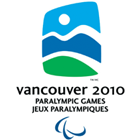The Homes Games Marketing Advantage is All About Relationships Says NPC Canada
Henry Storgaard shares the lessons NPC Canada learnt from Vancouver 2010 05 Sep 2011 By IPC"We have gone from virtual obscurity to now being a visible part of the Canadian sport landscape."
In 2003 when Vancouver won the rights to host the 2010 Olympic and Paralympic Games, the Canadian Paralympic Committee (CPC) was barely surviving financially. It had just two sponsors, very little media and broadcast coverage, a brand that had a low profile and just a handful of staff.
“Even after the Vancouver Organizing Committee had assisted us in securing six new major sponsors, by the fall of 2009 the Canadian Paralympic Committee was in debt, not all sponsors were activating, media coverage and brand awareness were very low and athletes were not recognizable. We had little to no marketing assets,” said Storgaard.
With just seven months to go before the Games, the CPC launched a six-point strategy:
1. Create marketing assets for TV, print & broadcast
2. Collaborate with the CTV Olympic Broadcast Consortium
3. Engage its current sponsors to activate and increase funding to the CPC
4. Cultivate relations with the federal government
5. Offer hospitality at Games for sponsors and prospective sponsors
6. Drive earned media pre, during and post Games
The CPC’s first step was to find an agency to give it pro bono advertising. President Gerry Frascione of the worldwide advertising agency network BBDO came through with $700,000 worth of creative services, producing two commercials and five print ads.
Armed with captivating commercials, the next strategy was to connect with the CTV Olympic Broadcast Consortium, the official broadcast company of the Vancouver Games. Consortium President Keith Pelley arranged, at no cost to the CPC, broadcast and newspaper space for the television and print ads worth more than $1 million and provided over 65 hours of television coverage of the Games – more than the CPC had ever had before.
The CPC’s next focus was on its eight major sponsors and several new official supplier category sponsors.
Closing Ceremony of the Vancouver 2010 Winter Paralympics, Photo: Getty Images
NPC Canada secured crucial
additional government funding
“Our challenge was to ensure some of the new sponsors would activate and to encourage the sponsors to look for new initiatives to increase our funding. Their responses were extremely generous and creative,” said Storgaard.
The CPC also initiated an effort to connect with federal government officials. Just weeks before the Games, Henry Storgaard, CEO & Secretary General of the Canadian Paralympic Committee met with Canada’s Finance Minister, the Honourable Jim Flaherty.
“Given the short timeframe between getting the meeting and the meeting itself – two days – I only brought one piece of paper with me to the meeting. We spoke for an hour and he asked pointed questions on our financial situation compared to the Canadian Olympic Committee and the same regarding Paralympians versus Olympians,” said Storgaard.
“It came time for the big question - how much money would we need? I responded with $5 million per year for five years to develop our grassroots program and build a sport system in Canada for people with disabilities to enhance our podium performances.
“I handed him the one piece of paper I brought to the meeting, a letter from a Grade 5 student who wrote to one of our Paralympians after a classroom visit. He read it, looked up at me and smiled. He said of course he would need a full proposal in the next three days to justify the funds, but I knew right then we had connected.”
On March 4, 2010, the day of the federal budget, Minister Flaherty announced his $5 million commitment per year with only eight days before the Vancouver 2010 Paralympic Games Opening Ceremony.
As this is was happening, the CPC was simultaneously organizing a VIP Hospitality Program to bring current sponsors, prospective sponsors and key opinion leaders to the Games.
“We forged stronger relationships with our sponsors, spending time with them on the field of play, as well as hosting dinners in their honour with some of our Paralympians in attendance. Canada Paralympic House became a gathering spot in the evening where athletes, coaches, sponsors, government officials and friends could build new relationships,” said Storgaard.
Opening Ceremony of the Vancouver 2010 Paralympic Winter Games
The steps NPC Canada took helped
to raise the profile of Paralympic Sport.
Throughout the lead-up to the Games, the CPC knew that media coverage would be essential to better educate Canadians on its athletes and the spirit of the Paralympics. More than 165 Canadian media registered to cover the Games and the CPC’s coverage increased from approximately 25 million media impressions during the entire year before the Games, to 13 to 27 million media impressions every day during the Games.
“We have gone from virtual obscurity to now being a visible part of the Canadian sport landscape.
“Overall, the advantages of a home Games in Canada have been extraordinary! Thank you, VANOC, IPC and our partners for the home Games advantage. The biggest lesson to take from this? Marketing is all about relationships, relationships, relationships,” said Storgaard.
For more information on the Canadian Paralympic Committee, please visit: www.paralympic.ca
Tomorrow (Tuesday 6 September), paralympic.org will publish an article about ParalympicsGB Chairperson Tim Reddish’s aspirations for the London 2012 Paralympic Games.
Tickets for London 2012 go on-sale on 9 September 2011. To sign up, please visit www.tickets.london2012.com.







